Reviving Skate: Exploring the Resurgence of Skateboarding Culture
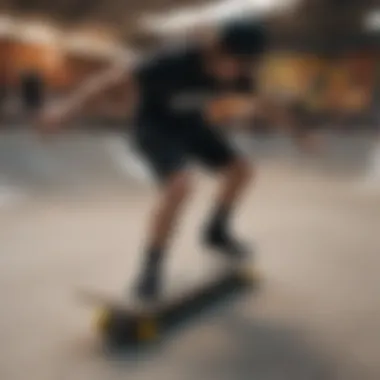
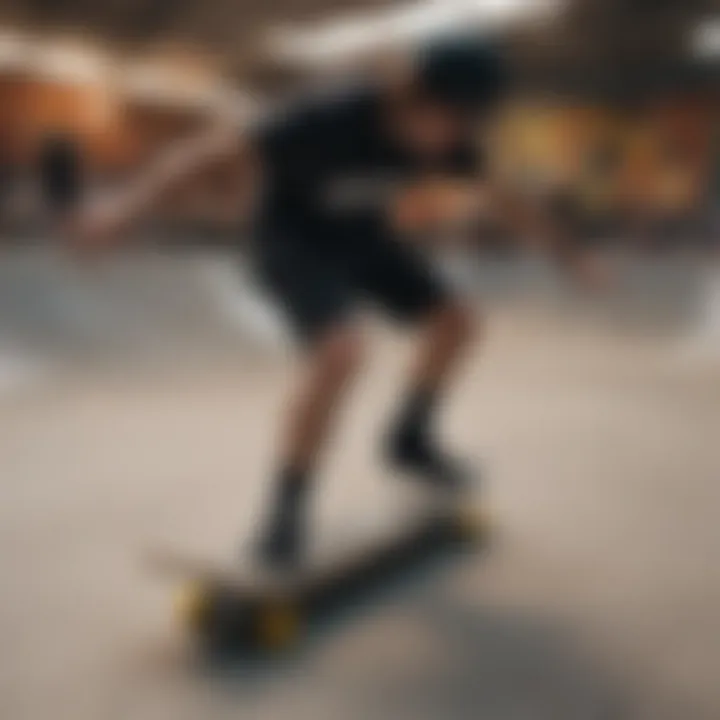
Intro
Skateboarding has emerged as a dynamic, evolving culture that transcends mere recreational activity. Its revival in recent years signals not only a renewed interest among thrill-seekers but also a deep-seated appreciation for its artistry and community. This article seeks to provide insightful analysis of the reasons behind this resurgence, examining various layers of skateboarding culture, from its diverse communities to innovative techniques.
In understanding skateboarding today, one must recognize the complex relationships between its roots and contemporary trends. By delving into skill development, essential gear, safety measures, and profiles of prominent athletes, we can cultivate a well-rounded perspective on what skateboarding embodies in the modern era.
This exploration is pertinent for those embedded in this culture, whether they are seasoned skaters or curious newcomers eager to navigate the intricacies of the scene. Tackling individual elements such as gear advancements, community developments, and skill progressions will shed light on the implications of skateboarding's revival, ultimately enriching our understanding of this multifaceted sport.
Through meticulous examination, we aim to highlight the transformative power skateboarding has on individuals and communities, showcasing how it continues to shape identities, foster creativity, and inspire innovation.
Prelude to Skateboarding Culture
Skateboarding culture holds significant importance in the realm of extreme sports and beyond. It represents more than just a physical activity. It embodies a lifestyle that reflects creativity, rebellion, and community. This section aims to provide a foundational understanding of what skateboarding culture encompasses and why it is crucial to analyze its contemporary resurgence.
Skateboarding has evolved into a multifaceted subculture characterized by various influences, styles, and forms of expression. From its origins in California in the 1950s to becoming a global phenomenon, skateboarding transcends mere sport. It intertwines with fashion, music, art, and social activism, making it a potent form of cultural expression.
Now, as interest in skateboarding is growing again, understanding its roots is vital. Recognizing how historical influences shape today’s skateboarding culture can reveal insights into the social dynamics and community interactions that define this activity. Furthermore, comprehending its uniqueness helps enthusiasts appreciate their connection to a larger movement.
Historical Context
To appreciate current practices in skateboarding, we must examine its historical context. Skateboarding began as a simple pastime for surfers in the 1950s when they wanted to ride even when waves were absent. Initially, the boards were rudimentary, made from wooden planks with roller skate wheels attached.
As the urban landscape changed, so did skateboarding. By the 1970s, innovations in board design and a growing popularity among youth led to a shift in skating environments. Empty pools became prime spots for skaters, pushing the boundaries of tricks and techniques.
The introduction of urethane wheels around this time revolutionized the sport. This advancement allowed for better control, making it easier to perform tricks. The late 1980s and early 1990s saw the rise of skating legends, like Tony Hawk, who further popularized the sport through competitions and exhibitions. Skateboarding became embedded in the youth culture, intertwining with punk music and street styles.
Rise in Popularity
Skateboarding’s resurgence is visible in various societal arenas. The rise of social media platforms like Instagram and TikTok has played a significant role in reviving interest among youth. Creators showcase their skills, promoting skateboarding to a new generation who might have never encountered it otherwise.
Several factors contribute to this renewed popularity:
- Increased Accessibility: Skate parks and private facilities are becoming more common in urban areas, allowing more individuals to participate.
- Cultural Relevance: Skateboarding appears as a symbol of nonconformity and individuality, attracting young people seeking unique identities in an increasingly homogenized society.
- Influencers and Stars: Well-known athletes and social media influencers promote skateboarding actively, inspiring followers to take up the sport.
- Diverse Communities: Skateboarding fosters community bonds. More inclusive spaces emerge, encouraging participation across various demographics.
Ultimately, the blend of historical legacy and modern dynamics encapsulates the essence of skateboarding culture.\n
"Skateboarding is a lifestyle that connects generations, perspectives, and cultures."
Recognizing these elements illuminates the meaning behind the resurgence as enthusiasts embrace skating as a genuine form of expression and community engagement.
Factors Influencing the Revival
The revival of skateboarding culture cannot be attributed to a single factor. Instead, it emerges from a confluence of influences that shapes the modern landscape of this sport. Understanding these factors is essential, as they reveal how skateboarding fits into a broader cultural context. The resurgence is not just a trend but a significant evolution influenced by social dynamics, technological advancements, and community engagement.
Social Media and Skateboarding
Social media platforms play a crucial role in the current revival of skateboarding. Sites like Instagram and TikTok allow skaters to share their tricks, styles, and lifestyles instantly. This visibility encourages more people to participate in skateboarding, as they can access content that inspires them.
The immediacy of social media creates a feedback loop. Skaters showcase their skills, garner reactions, and seek validation based on likes and shares. Trends spread quickly, and new skating techniques or styles can become popular within days. Skaters from all around the world can connect, share insights, and inspire each other. This global network is vital for maintaining enthusiasm within established communities as well as attracting newcomers.
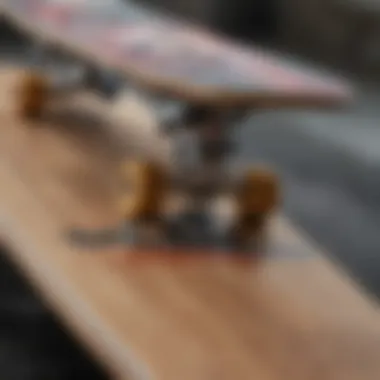
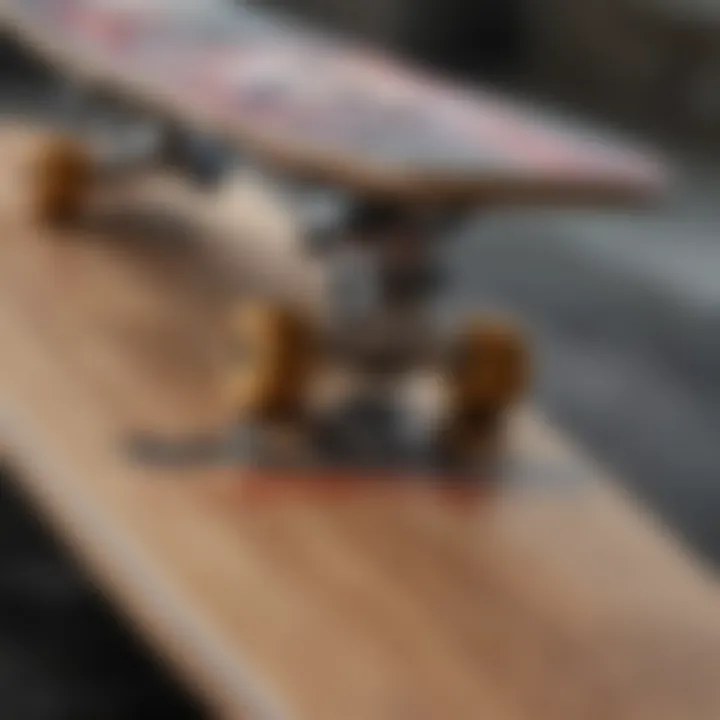
"Social media fundamentally transformed how we see skateboarding; it is no longer confined to local scenes but has a worldwide audience."
The Role of Influencers
Influencers are another significant factor in skateboarding's revival. Figures like Nyjah Huston and Lizzie Armanto have not only contributed to their sport's visibility but also shaped its culture. When such personalities endorse certain brands or styles, their followers are likely to emulate them, thus bridging the gap between mainstream fashion and skate culture.
Brands often collaborate with these influencers to reach broader demographics. This partnership can lead to innovative products designed specifically for the community. When fans see their favorite skaters engaging with brands, it creates an aspirational context. Many young enthusiasts seek to emulate these influencers, which drives interest in the sport further.
Community Engagement and Events
The role of community engagement is also crucial in the revival of skateboarding culture. Local skate parks often serve as hubs where enthusiasts gather to practice, share techniques, and participate in competitions. Events such as street contests and park jams bring together both new and experienced skaters. The energy during such events fosters a sense of belonging, encouraging participants to deepen their involvement in the sport.
Moreover, initiatives aimed at promoting skateboarding to underrepresented groups play a vital role in broadening the culture. Programs encouraging youth engagement can provide access to skateboarding for those who may not have had the chance to experience it otherwise. Supporting diversity within the sport strengthens the community and expands its reach.
Skateboarding as a Lifestyle
Skateboarding transcends its role as just a sport; it embodies a lifestyle that integrates fashion, art, and community into daily living. For many, it represents more than just physically riding a board; it reflects personal identity, social interactions, and expressive choices. Understanding skateboarding as a lifestyle requires an exploration of how it shapes individuals and communities alike.
Fashion and Identity
Fashion within skateboarding acts as a powerful symbol of identity. The clothing and accessories associated with skating often feature bold designs and unmistakable logos, which reveal more than just style preferences. Brands like Vans and Supreme are not merely labels; they represent inclusion and a shared ethos among skaters. Wearing specific apparel can communicate allegiance to a certain skate crew or a geographic identity.
The fashion reflects practicality too. Skate shoes are designed to endure the wear and tear of tricks while providing grip and comfort. The choice of clothing often prioritizes mobility over aesthetics. This unadulterated approach to style creates a community where individuals can express authenticity without pretense.
- Influence on personal style: Skating culture invites enthusiasts to find their unique style, often mixing elements from punk, hip-hop, and surf cultures.
- Inclusivity in fashion: Many skate brands focus on gender-neutral styles, encouraging all skaters to express themselves freely.
Art and Expression
Art is inherently woven into the fabric of skateboarding. From the vibrant graphics on skateboard decks to murals that adorn the walls of skate parks, the visual elements reflect creativity and individuality. Skaters often utilize their boards as canvases, where skateboard graphics can tell stories or comment on social issues.
The aesthetic extends beyond the skateboard itself. Street art and graffiti are deeply connected to mainstream skating culture, often providing a voice for marginalized artists. Skateboarders not only ride but also engage in artistic expression through video edits, photography, and social media content.
"Through skateboarding, artists reveal their inner worlds, often challenging societal norms and expressing raw emotions."
- Style of expression: Creating unique board designs and personal skate videos showcase distinct artistic flair.
- Platforms for visibility: Social media platforms like Instagram and Reddit allow skaters to share their artwork and receive immediate feedback, fostering an intersection of art and sport.
In essence, skateboarding as a lifestyle incorporates numerous aspects of self-expression through fashion and art. This lifestyle shapes users on deeper levels, allowing individuals to navigate their identities and affiliations while fostering a culture of creativity.
Technical Aspects of Skateboarding
Understanding the technical aspects of skateboarding is crucial to grasping the full scope of its culture and resurgence. The design of skateboards and the techniques involved are foundational elements that shape the experiences of skateboarders. By delving into these specifics, one can appreciate not only the evolution of the sport but also the intricacies that define a skater’s identity.
Evolution of Skateboard Design
The evolution of skateboard design reflects the continuous adaptation of the sport to both technological advancements and the needs of its practitioners. Early skateboards were often made from simple wood planks with metal roller skate wheels. Over the years, materials and design have evolved significantly.
Today, skateboards are typically made from high-quality maple wood, fiberglass, or even carbon fiber to enhance durability and performance. The shape of the board has also changed, with various designs including concave, flat, and kicktail or nose shapes that cater to different styles of skating. Each variation influences how tricks are performed and how riders interact with their environment.
Modern innovations include:
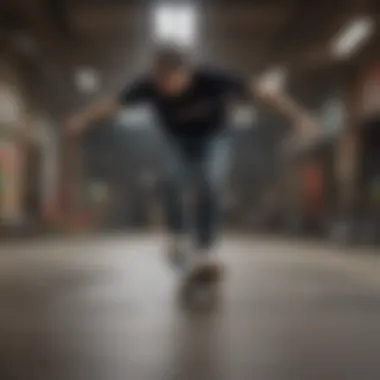

- Wider and longer boards: These provide stability for various tricks and allow for larger landings.
- Specialized wheels and bearings: These improve speed and handling, which are essential for technical tricks.
- Additional features: Some boards come equipped with built-in LED lights and other tech to stand out in both aesthetics and functionality.
The transition to more advanced materials and designs highlights the importance of progression in skateboarding. An understanding of these elements helps enthusiasts appreciate the complexity involved in selecting the right board to match their personal style.
Skateboarding Techniques and Tricks
Skateboarding techniques and tricks are the lifeblood of the culture, showcasing the creativity and skills of the riders. From basic maneuvers to complex tricks, the repertoire available is vast. The foundation begins with simple riding techniques, where balance and control are crucial.
As skaters become more confident, they can progress to tricks such as:
- Ollie: A fundamental trick allowing riders to leap without grabbing the board.
- Kickflip: A more advanced maneuver where the rider flips the board in mid-air.
- Grinds and slides: These utilize obstacles like rails or ledges, adding an urban twist to the practice.
Tricks can be categorized between street and park styles, each requiring unique skill sets. Street skating focuses on using urban environments, while park skating involves ramps and bowls designed for various tricks.
Understanding the techniques also involves being aware of safety concerns and injury prevention. Beginner skaters should focus on mastering basic skills before attempting advanced tricks. Utilizing protective gear like helmets, knee pads, and elbow pads is also highly recommended to ensure safety while enjoying the thrill of the sport.
In summary, the technical aspects of skateboarding—ranging from design to techniques—play a paramount role in its culture. By recognizing these elements, skaters and enthusiasts alike can deepen their engagement and appreciation for this vibrant form of self-expression.
"Skateboarding is an art; it is about creating something unique with a board and a vision."
These elements together weave a narrative that enhances the overall experience of skateboarding, showcasing its rich culture, community engagement, and profound impact on individuals.
Cultural Impact of Skateboarding
Skateboarding is not merely a sport; it holds significant cultural influence that reverberates through music, fashion, and various art forms. Understanding this impact helps appreciate how deeply ingrained skateboarding is into broader societal conversations. It serves as a conduit for self-expression among youth and transcends geographical boundaries, uniting diverse groups through a shared passion for skating.
Interaction with Other Sports
The intersection of skateboarding with other sports reveals a fascinating dynamic. Street culture and extreme sports have infused skateboarding with a unique identity. As it connects with activities like BMX, surfing, and snowboarding, it creates a fertile ground for innovation and creativity.
- Collaborative Endeavors: Athletes from different disciplines frequently cross paths, leading to collaborative events and competitions. For instance, the X Games and Street League Skateboarding attract a mixed audience eager to witness a blend of skateboarding tricks alongside traditional sports grandeur.
- Skill Transfer: Techniques from one sport often find their way into skateboarding, pushing boundaries and enhancing skill levels. For example, BMX riders have influenced trick styles exemplifying a mutual admiration between disciplines.
- Broader Outreach: Skateboarders are now seen participating in multi-sport events, which help reach wider audiences. Major sports networks broadcast these events, elevating skateboarding's status and placing it on par with other established sports.
Globalization of Skateboarding
Skateboarding's globalization has generated a rich tapestry of culture, adopting local nuances while retaining its core essence. This process is primarily facilitated through social media platforms, wherein videos and tutorials proliferate; skateboarding becomes accessible worldwide.
- Cultural Exchange: Different regions contribute unique styles and tricks. From the smooth lines of Japanese skaters to the aggressive street culture in Los Angeles, each locale offers something distinctive. This blend fosters a sense of belonging and an educational platform for skaters.
- Global Events: Events like the Olympics have placed skateboarding under the global spotlight. The inclusion of skateboarding in the Tokyo 2020 Olympic Games resulted in an influx of new skaters, fuelling interest in emerging markets such as India and Africa. Each country offers a unique perspective on skate culture, expanding its reach and relevance.
- Building Communities: Online forums and communities like Reddit provide skaters a platform to share experiences and knowledge, creating international kinship among enthusiasts. Such global networks bolster not only skating communities but also inspire young skaters to pursue this as a career path.
Globalization ensures skateboarding retains its rebellious spirit while fostering inclusivity across cultures.
In summary, skateboarding’s cultural impact cannot be understated. It links various sports, encourages local and international collaboration, and creates a shared home for likeminded individuals, each adding to the vibrancy of the skateboarding community.
Trials and Challenges
Understanding the hurdles within skateboarding is key to fully grasping its culture and its resurgence. Skateboarding is more than just a sport; it embodies identity, creativity, and community, yet it is not without complications. By addressing the challenges, enthusiasts can create more inclusive spaces where skating can thrive.
Safety Concerns and Injury Prevention
Safety is a fundamental consideration in skateboarding. The culture often glorifies high-risk maneuvers and daring tricks. Unfortunately, this can lead to a disregard for safety precautions. Injuries are common, ranging from minor scrapes to significant fractures. Understanding the types of injuries prevalent in the sport—such as wrist sprains, ankle fractures, and concussions—is vital.


Preventive measures include wearing appropriate protective gear, such as helmets, knee pads, and elbow pads. While some may view this as restrictive or less stylish, it is essential for reducing risk. Educating new skaters about warm-up routines and proper riding techniques can also foster a culture of safety. Skate schools and community workshops serve as platforms for these discussions, emphasizing that protection does not diminish one's commitment to the sport.
"As the skateboarding community evolves, so too must our approach to injury prevention. Educating skaters is key to sustaining the growth of the sport."
Street vs. Park Skating
The debate between street and park skating exemplifies the diverse challenges skaters face. Each environment presents distinct terrains that can influence a skater's style and technique. Street skating often uses urban landscapes—rails, stairs, and ledges—creating unique risks and rewards. The unpredictability of these environments requires skaters to adapt quickly and creatively.
On the other hand, park skating takes place in controlled environments designed specifically for skating. These parks often feature ramps, bowls, and other structures, leading to a different set of challenges. Although parks may reduce some risks associated with street skating, they also present difficulties, including crowded spaces that can lead to collisions.
Considerations:
- Skill Development: Park skating might offer a safer space for novices to learn, while street skating can sharpen technical skills.
- Accessibility: In many cities, parks are not equally accessible. Some skaters may feel pressured to skate in risky street environments due to lack of options.
- Community Dynamics: Different styles can create divides within the community, emphasizing a need for mutual respect among skaters, regardless of their preferred environment.
Fostering a dialogue about these challenges can highlight the importance of both arenas. Recognizing that both street and park skaters contribute to the culture can lead to greater acceptance and collaboration within the skating community.
The Future of Skateboarding
The future of skateboarding represents a convergence of innovation, culture, and community. As the landscape of skateboarding continually evolves, various factors are shaping its trajectory. This includes new trends within the sport, an increasing emphasis on sustainability, and the adoption of technology. Understanding these aspects will give enthusiasts, manufacturers, and event organizers insights into where skateboarding is headed.
Emerging Trends
In recent years, several trends have started to emerge within skateboarding. One significant trend is the growing integration of technology. Skateboards, once simple wooden planks, now incorporate advanced materials and functionalities. For instance, electric skateboards are gaining traction, appealing to a broader audience. These boards allow riders to experience the thrill of skateboarding while also providing alternatives to traditional transportation.
More importantly, social media has become an essential platform for showcasing skateboarding talent. Influencers and amateur skaters alike share videos that connect them to a global audience. This visibility promotes not only individual riders but also inspires more people to start skateboarding, leading to an influx of new participants in local communities.
Another trend is the rise of competition formats that include street and park skateboarding in the Olympics. Skateboarding's inclusion in this prestigious event reflects its acceptance as a mainstream sport, potentially attracting more sponsorships and professional opportunities. Furthermore, this shift encourages younger generations to engage with the sport through structured competitions.
Sustainability and Eco-Consciousness
Sustainability is becoming increasingly relevant in skateboarding culture. As environmental concerns grow globally, many companies and skateboarders are adopting eco-friendly practices. Skateboard brands now produce boards using sustainable materials, such as bamboo or recycled plastics. This shift doesn't just reflect corporate responsibility but also responds to consumer demand for greener products.
Moreover, eco-consciousness extends beyond product materials. Skateboarding events and competitions are implementing initiatives to reduce waste and promote recycling. Community efforts to clean skate parks and urban spaces illustrate how skaters are taking responsibility for their environment.
"Environmental awareness is important for the future of the sport. People want to ride but also take care of the planet."
In this context, the future of skateboarding hinges on balancing the tradition of the sport with modern-day challenges. Innovations will continue to shape the industry, but skaters and brands alike must prioritize sustainability to ensure the longevity of their beloved pastime. As these elements come into play, the skateboarding community can look forward to a vibrant and conscientious future.
Epilogue
In analyzing the resurgence of skateboarding culture, the conclusion serves as a significant recap of the entire discussion. It emphasizes both the historical context and the modern revival that skateboarding is undergoing. The essence of skateboarding has evolved, yet the core values, such as creativity, community, and individuality, remain very active.
Summarizing the Skateboard Revival
The revival of skateboarding can be attributed to various factors that intertwine. The impact of social media cannot be overstated. It has provided platforms for sharing tricks, styles, and culture on a global scale. This, in turn, has inspired a new generation of skaters who embrace diversity in skating styles, from street skating to vert. Furthermore, the increasing presence of skateboarding in mainstream sports, notably in competitions like the X Games and the recent Olympic inclusion, has added legitimacy to the sport while appealing to a broader audience.
Moreover, the cultural significance of skateboarding continues to resonate. It is not merely a sport; it is a lifestyle, encompassing fashion, art, and music. The skateboard community thrives on creativity and self-expression, creating spaces where different subcultures can merge and innovate. Through events and grassroots movements, skateboarding fosters connections among enthusiasts, sandwiching this revival within a larger cultural narrative. By synthesizing these elements, we recognize how the skateboard revival transcends its traditional bounds, integrating into the fabric of contemporary society.
Call to Action for Enthusiasts
For those captivated by skateboarding, whether novices or seasoned pros, the current landscape offers exciting opportunities. Engaging with local skateparks and clubs can cultivate a sense of belonging. Sharing your journey on platforms such as Instagram or forums like Reddit can inspire others and contribute to the vibrant community.
Consider attending organized events or workshops tailored for all skill levels. These gatherings are not only educational but also a chance to meet fellow enthusiasts and share experiences. For families, introducing children to skating can instill valuable lessons in perseverance and creativity.
As a final note, remember that skateboarding is as much about personal expression as it is about the sport itself. Hence, embrace your style, connect with others, and participate in the revival. Your involvement strengthens the community and adds to the tapestry of skateboarding culture that continues to thrive.
Together, let’s skate towards a more inclusive future, where every rider finds their place in this evolving scene.







